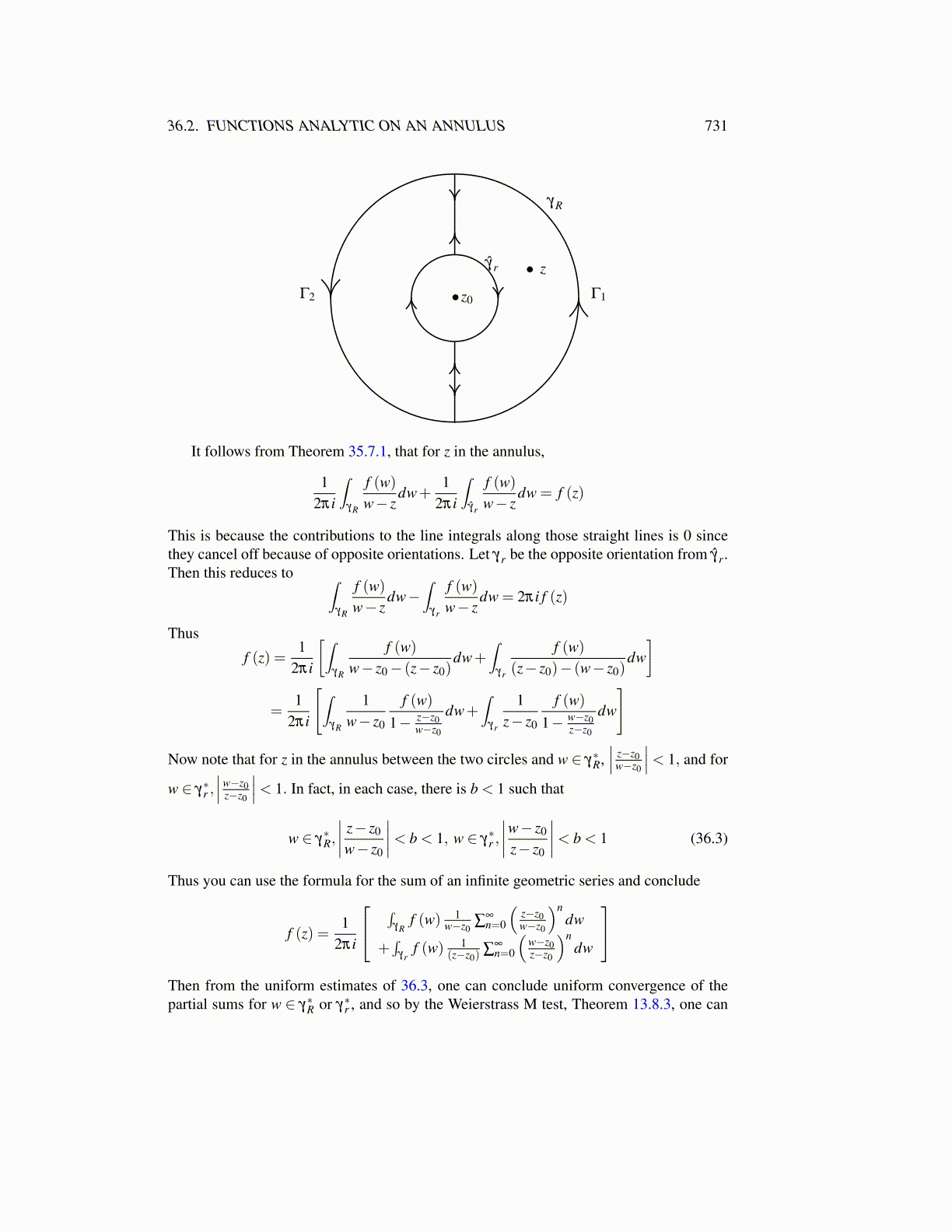
36.2. FUNCTIONS ANALYTIC ON AN ANNULUS 731
γR
γ̂r • z
Γ1Γ2 •z0
It follows from Theorem 35.7.1, that for z in the annulus,
12πi
∫γR
f (w)w− z
dw+1
2πi
∫γ̂r
f (w)w− z
dw = f (z)
This is because the contributions to the line integrals along those straight lines is 0 sincethey cancel off because of opposite orientations. Let γr be the opposite orientation from γ̂r.Then this reduces to ∫
γR
f (w)w− z
dw−∫
γr
f (w)w− z
dw = 2πi f (z)
Thus
f (z) =1
2πi
[∫γR
f (w)w− z0− (z− z0)
dw+∫
γr
f (w)(z− z0)− (w− z0)
dw]
=1
2πi
[∫γR
1w− z0
f (w)1− z−z0
w−z0
dw+∫
γr
1z− z0
f (w)1− w−z0
z−z0
dw
]
Now note that for z in the annulus between the two circles and w ∈ γ∗R,∣∣∣ z−z0
w−z0
∣∣∣< 1, and for
w ∈ γ∗r ,∣∣∣w−z0
z−z0
∣∣∣< 1. In fact, in each case, there is b < 1 such that
w ∈ γ∗R,
∣∣∣∣ z− z0
w− z0
∣∣∣∣< b < 1, w ∈ γ∗r ,
∣∣∣∣w− z0
z− z0
∣∣∣∣< b < 1 (36.3)
Thus you can use the formula for the sum of an infinite geometric series and conclude
f (z) =1
2πi
∫γR
f (w) 1w−z0
∑∞n=0
(z−z0w−z0
)ndw
+∫
γrf (w) 1
(z−z0)∑
∞n=0
(w−z0z−z0
)ndw
Then from the uniform estimates of 36.3, one can conclude uniform convergence of thepartial sums for w ∈ γ∗R or γ∗r , and so by the Weierstrass M test, Theorem 13.8.3, one can